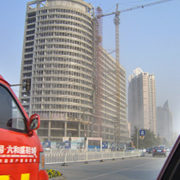Archive | Economics RSS feed for this section
Economics, Education, Environment, Health, Population, Social development and protection, Urban development
 Economics, Finance sector development, Governance and public sector management
Economics, Finance sector development, Governance and public sector management
 Economics, Education, Finance sector development, Governance and public sector management, Poverty, Social development and protection
Economics, Education, Finance sector development, Governance and public sector management, Poverty, Social development and protection
 Economics, Finance sector development, Poverty
Economics, Finance sector development, Poverty
 Economics, Energy, Finance sector development, Governance and public sector management
Economics, Energy, Finance sector development, Governance and public sector management
 Economics, Education, Finance sector development, Governance and public sector management, Infrastructure
Economics, Education, Finance sector development, Governance and public sector management, Infrastructure
 Economics, Education, Finance sector development
Economics, Education, Finance sector development
 Economics, Education, Finance sector development
Economics, Education, Finance sector development
 Economics, Energy, Environment, Governance and public sector management, Infrastructure
Economics, Energy, Environment, Governance and public sector management, Infrastructure
 Economics, Finance sector development, Industry and trade
Economics, Finance sector development, Industry and trade

Pointers from Asia for urbanization in Africa

Africa and Asia are latecomers to urbanization. In these two continents, less than half live in urban centers, while elsewhere, more than 70% of people do. But Africa and Asia are now rapidly urbanizing, with Asian cities growing at an average of 1.5% per year and Africa’s at 1.1% per year.
Is corruption “sand in the wheels” for credit markets? Evidence from European MSMEs

Bank credit is a crucial financing tool for micro, small, and medium-sized enterprises (MSMEs) given their difficulty in entering equity markets. However, accessing bank credit is not as easy as one might think. Specifically, MSMEs often face difficulties when they need to provide valid collateral to loan officers (Cowan, Drexler, and Yañez, 2015).
Costs of expanded public pension coverage in emerging Asia

The fiscal burden of public pensions in most emerging Asian economies is relatively small, reflecting relatively young populations and limited coverage of the retired-age population in public pension programs. Nonetheless, these conditions are likely to change dramatically in the coming decades. First, many Asian economies will face rapidly aging populations, which will raise pension and other old-age-related spending substantially. Second, as economies develop, political pressures to expand the coverage of public pensions and raise the level of pension benefits relative to income will likely increase.
Distortions, growth catch-up, and the middle-income trap

In theory, a distortion refers to a departure from the perfect competitive equilibrium with no externalities and in which resources have been optimally allocated so that each economic agent maximizes his or her own welfare. Thus, distortions are closely associated with market imperfections. In reality, an economy with no distortions does not exist—both advanced and developing economies use government interventions, such as stabilization policies, development strategies, industrial policies, administrative regulations, and so forth, which can be viewed as distortions, broadly defined.
Twenty years after the Asian financial crisis: The evolution of Asian financial cooperation

When Asia was hit by its regional financial crisis 20 years ago, Asian policy makers were quick to call for regional solutions to what was perceived to be a common problem: Asian countries’ dependence on foreign finance. Prominent political figures and scholars argued for a greater regional focus of monetary and economies policies, suggesting the introduction of currency baskets modeled on trade patterns, financial structures, and even Asian currency units akin to the European Currency Unit, the euro’s predecessor.
Kick-start private infrastructure with future tax-sharing bonds

Everybody from President Trump to the Global Infrastructure Forum is trying to think of innovative ways to attract long-term private and institutional investors to pay for the huge and largely unmet demand for new highways, railways, and dams. Promising ideas, including guarantees or gap funding, the concessional blending of finance, and bankability enhancements, have been tried but are not enough to convince overseas pension schemes or high net worth individuals to invest their idling funds in worthwhile projects, especially in emerging economies with untried issuers (Regan, 2017).
Monetary policy spillovers in emerging Asia

For a number of years, the central banks of the major advanced economies have pursued historically unprecedented ultra-low interest rate policies and negative interest rate policies. Facing the zero lower bound problem, they have also implemented various asset purchase programs, known as “quantitative easing,” with the aim of reducing long-term interest rates. There has been growing evidence that advanced countries’ unconventional monetary policies (UMPs) have caused significant spillovers to the financial markets of emerging market economies (EMEs).
Asia’s financial connections with the rest of the world: Changing patterns

As economies in East Asia and the Pacific (EAP) have developed, they have also become important in international financial transactions, both as sources and destinations of cross-border bank lending, foreign direct investment (FDI), and portfolio investments. But, as we document in a new paper (Didier, Llovet, and Schmukler 2017), the composition of these financial connections has been changing in recent years on at least two fronts: (i) the partners with which EAP countries interact, and (ii) the type of financial transactions conducted.
Electrifying emerging ASEAN through off-grid distributed renewable energy systems

Some 134 million people in the Association of Southeast Asian Nations (ASEAN) region do not have access to electricity (IEA and ERIA, 2013). At the end of 2015, the ASEAN Community declared that the lack of power and energy access could threaten the region’s economic growth and its economic transition.
How does exchange rate volatility affect value added and gross trade?

The rise of Donald Trump has reignited the debate on the link between exchange rates and trade. The Trump administration has blamed the exchange rate policies of the People’s Republic of China (PRC), Japan, and Germany for the current account deficit in the United States (US), and the president’s Twitter posts have put many major currencies on a roller coaster ride. Now, policy makers around the globe are concerned about the negative impact of exchange rate volatility on world trade.


Search
Subscribe / Connect to Asia Pathways
Subjects
- Agriculture and natural resources
- Blog
- Capacity development
- Climate change
- Economics
- Education
- Energy
- Environment
- Finance sector development
- Gender
- Governance and public sector management
- Health
- Industry and trade
- Information and Communications Technology
- Infrastructure
- Miscellaneous
- Population
- Poverty
- Private sector development
- Regional cooperation and integration
- Sanitation
- Social development and protection
- Transport
- Uncategorized
- Urban development
- Video Blog
- Water
Recent Posts
- Artificial intelligence: A new driver for inclusive growth and development?
- Increasing trust in cross-border e-commerce and artificial intelligence
- Enhancing access to maternal and newborn healthcare in developing Asia
- Can electric vehicles lead the way to a sustainable future?
- Mitigating climate-related sovereign risk to accelerate action on the climate emergency




Recent Comments